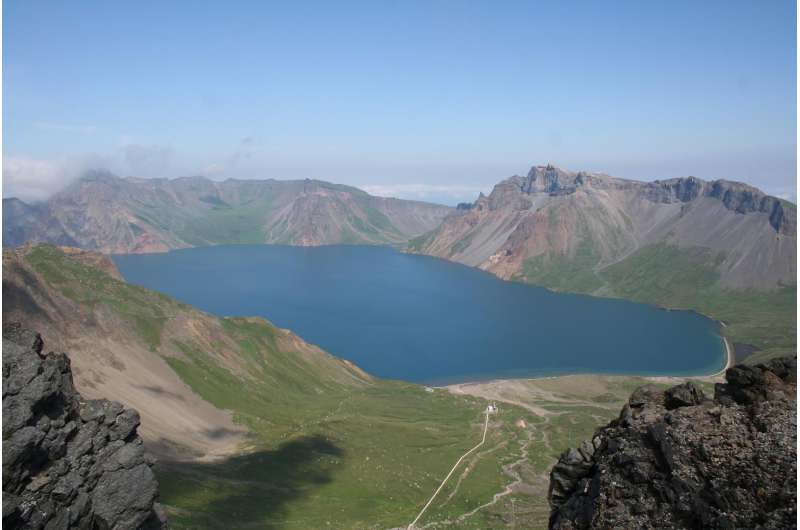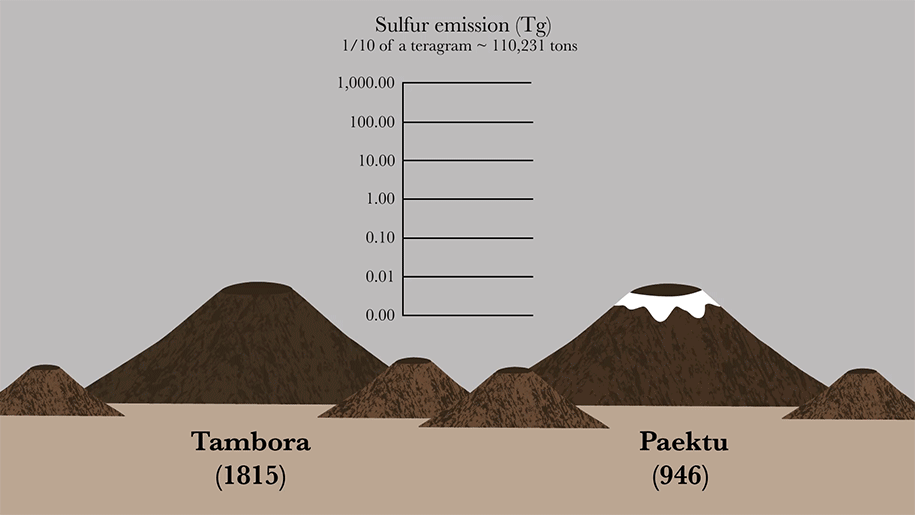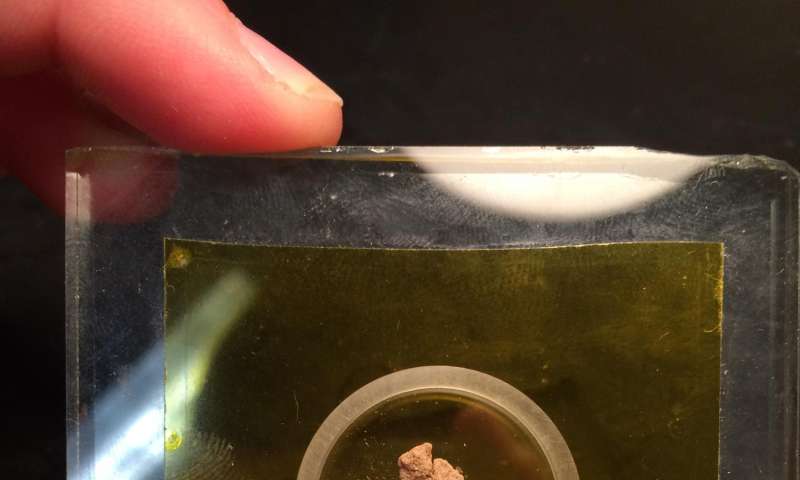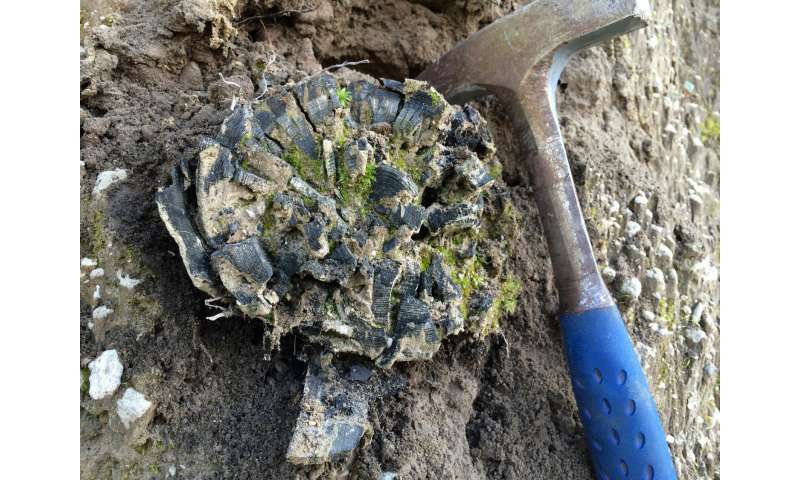December 1, 2016 report
New look at Mount Paektu eruption suggests it released far more sulfur than thought

(Phys.org)—A team of researchers with members from the U.K., North Korea, China and the U.S. has found evidence that suggests the volcanic eruption of Mount Paektu in 946 C.E. spewed far more sulfur into the atmosphere than has been thought. In their paper published in the journal Science Advances, the team describes experiments they conducted on rocks retrieved from the site and offers a possible explanation for the lack of evidence from ice core samples.
Mount Paektu sits on the border between North Korea and China (where it is called Changbai). Prior studies have shown that the mountain experienced a massive explosion nearly a thousand years ago, one that likely was the largest volcanic event in recorded history. But prior studies have also shown that the eruption did not appear to have much of a climatic impact—little sulfur was found in ice cores in Greenland or in tree rings from other parts of the world. To better understand why such a strange set of circumstances may have come about, the researchers traveled to the site and collected pumice samples for study in their lab. Their first experiments centered around studying the amount of the gas in globules of magma that became preserved in the rock and represented the amount of sulfur present before the eruption.
The team then compared what they found with other magma that had cooled afterward—the difference between the two represented the amount of sulfur that had been released into the air. But, the researchers noted, that amount would only represent the sulfur that was sent into the air during an eruption. To find out how much of the gas might have made its way into the air before the eruption, the researchers modeled the crystallization of magma as it cooled—some of its elements, they noted, would crystalize more easily than others. By factoring in the rate at which sulfur crystalizes, the team was able to calculate how much sulfur had escaped prior to eruption—42 megatons—a massive amount that would have eclipsed the amount spewed forth from the prior record holder, the Tambora eruption of 1815.

If such is the case, why is there little evidence of a global impact? The researchers suggest that it might be due to such factors as the eruption occurring at a high latitude where dispersal is limited; additionally, it happened in the winter, when global cooling is less noticeable.
-

Preparing samples for analysis in the lab. Credit: Kayla Iacovino -

1000-year-old tree preserved in Millenium Eruption pyroclastic flow in China. Credit: Kayla Iacovino
More information: K. Iacovino et al. Quantifying gas emissions from the "Millennium Eruption" of Paektu volcano, Democratic Peoples Republic of Korea/China, Science Advances (2016). DOI: 10.1126/sciadv.1600913
Abstract
Paektu volcano (Changbaishan) is a rhyolitic caldera that straddles the border between the Democratic People's Republic of Korea and China. Its most recent large eruption was the Millennium Eruption (ME; 23 km3 dense rock equivalent) circa 946 CE, which resulted in the release of copious magmatic volatiles (H2O, CO2, sulfur, and halogens). Accurate quantification of volatile yield and composition is critical in assessing volcanogenic climate impacts but is challenging, particularly for events before the satellite era. We use a geochemical technique to quantify volatile composition and upper bounds to yields for the ME by examining trends in incompatible trace and volatile element concentrations in crystal-hosted melt inclusions. We estimate that the ME could have emitted as much as 45 Tg of S to the atmosphere. This is greater than the quantity of S released by the 1815 eruption of Tambora, which contributed to the "year without a summer." Our maximum gas yield estimates place the ME among the strongest emitters of climate-forcing gases in the Common Era. However, ice cores from Greenland record only a relatively weak sulfate signal attributed to the ME. We suggest that other factors came into play in minimizing the glaciochemical signature. This paradoxical case in which high S emissions do not result in a strong glacial sulfate signal may present a way forward in building more generalized models for interpreting which volcanic eruptions have produced large climate impacts.
Journal information: Science Advances
© 2016 Phys.org




















